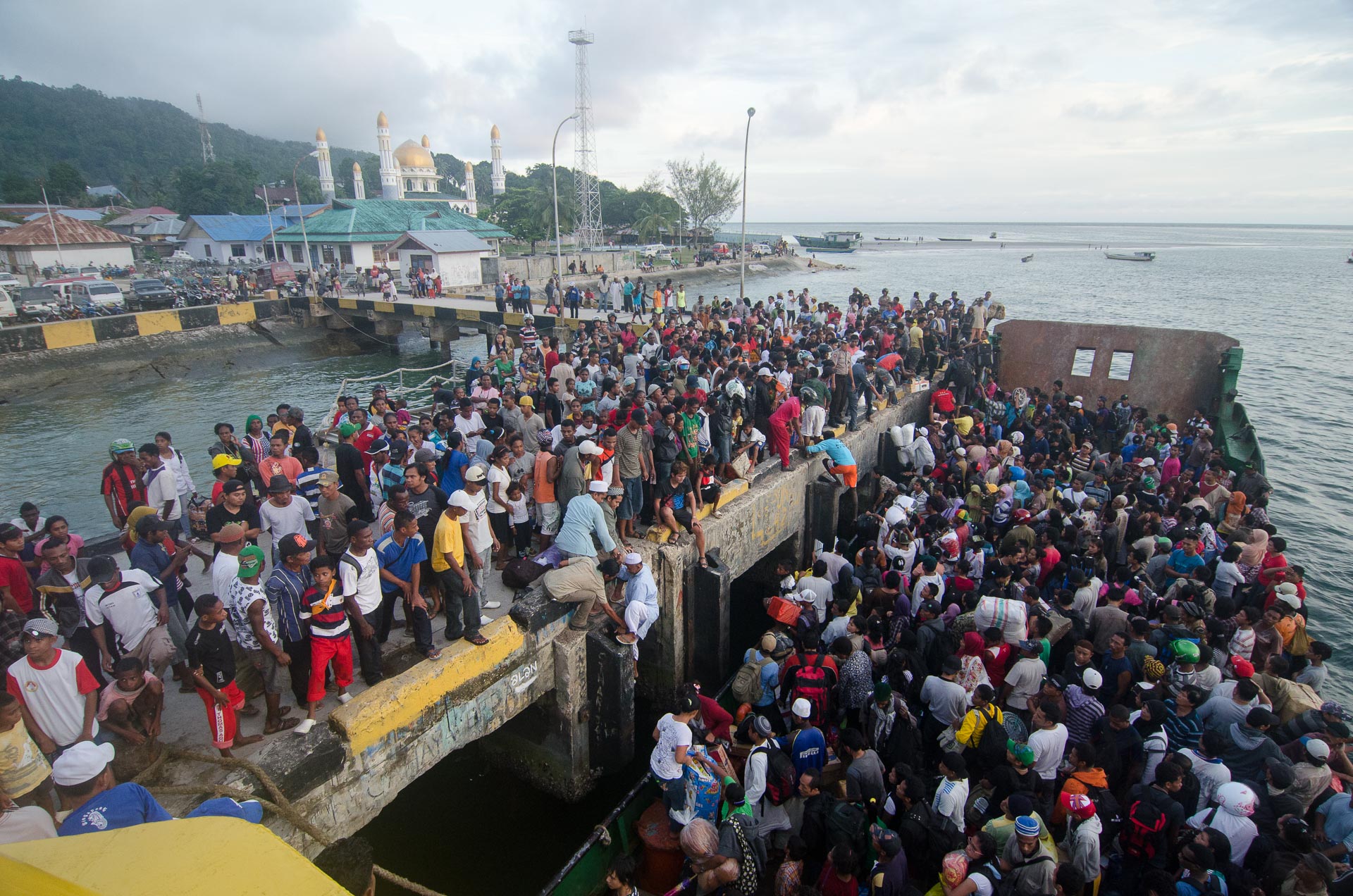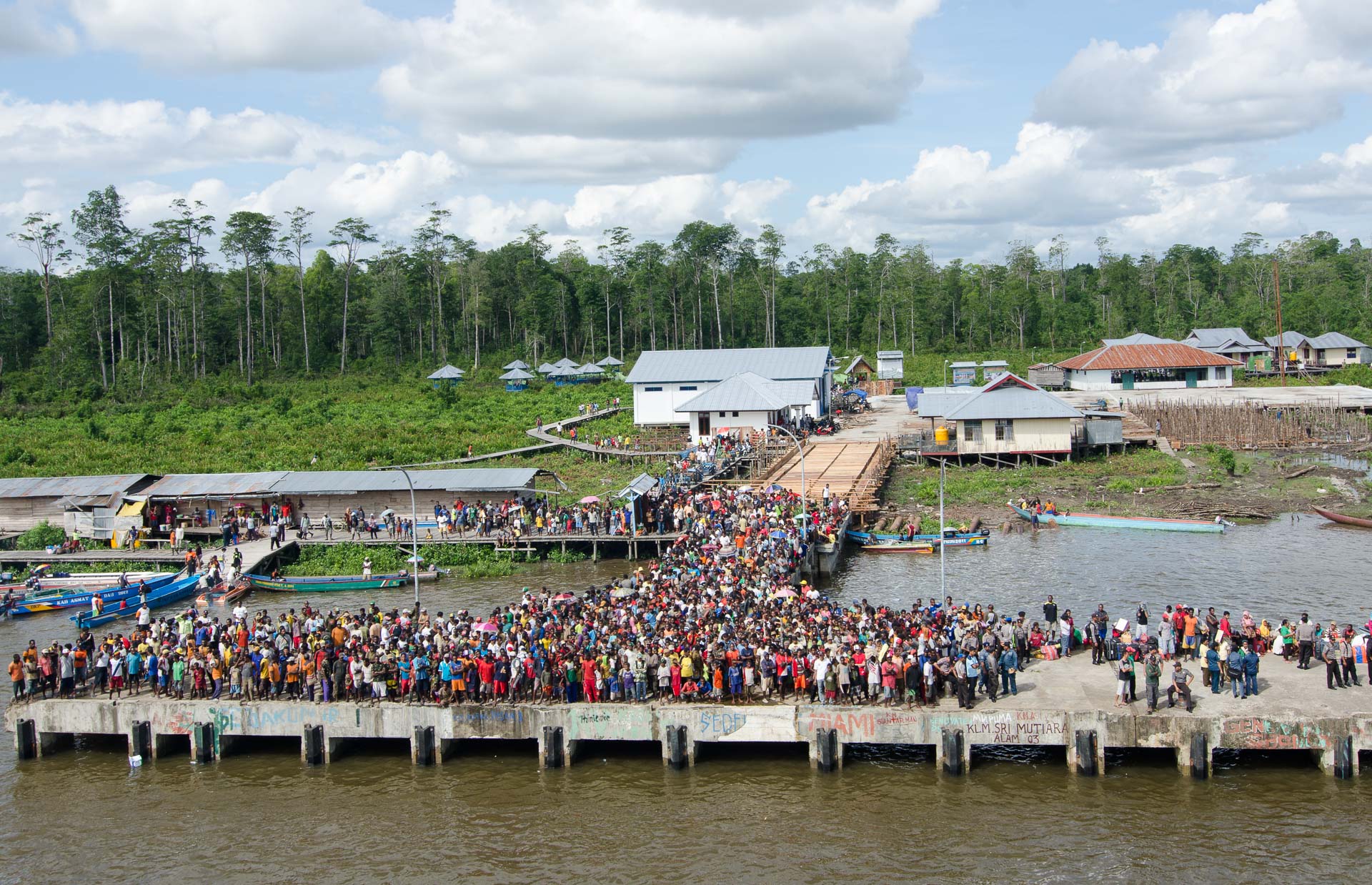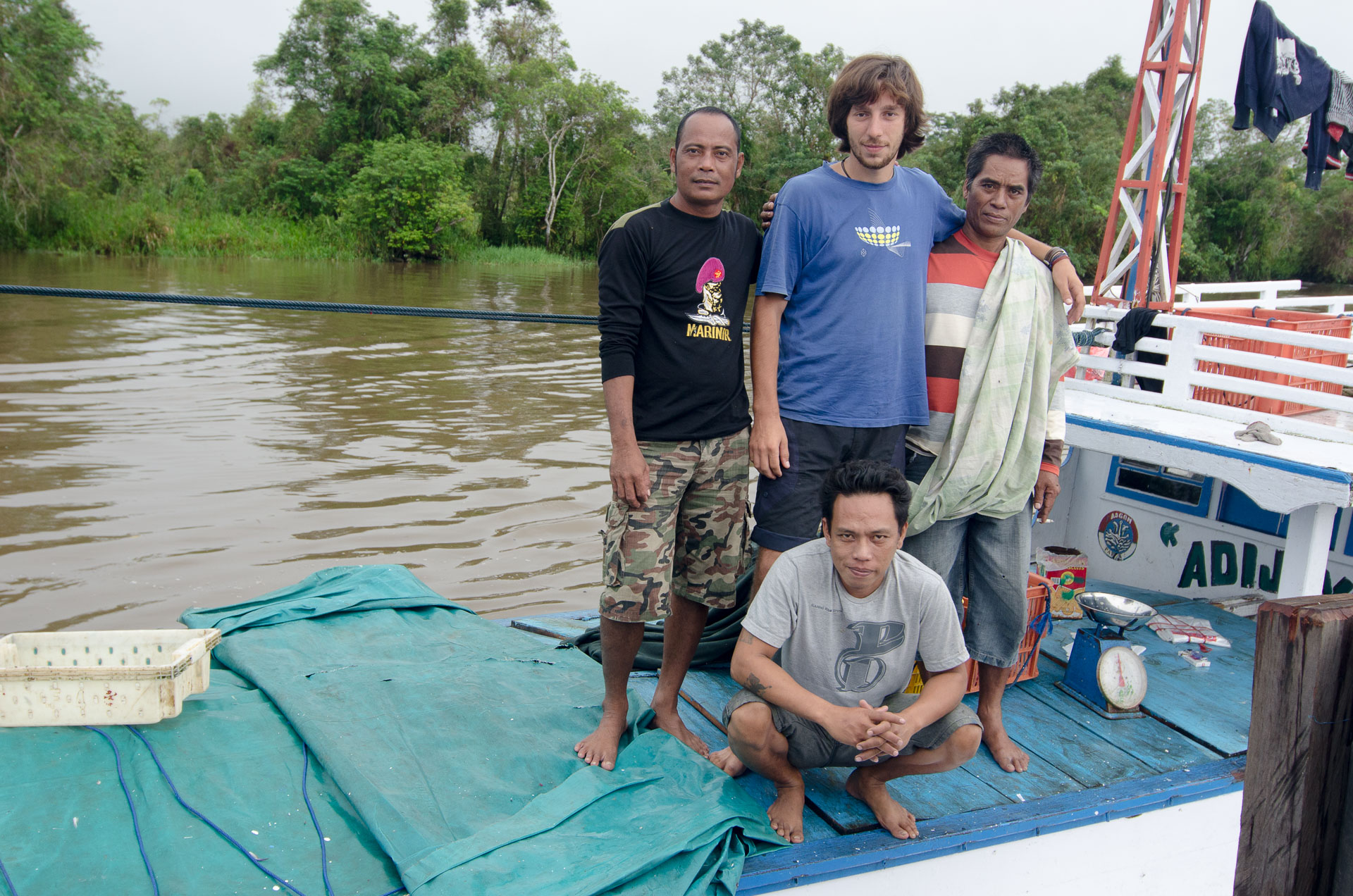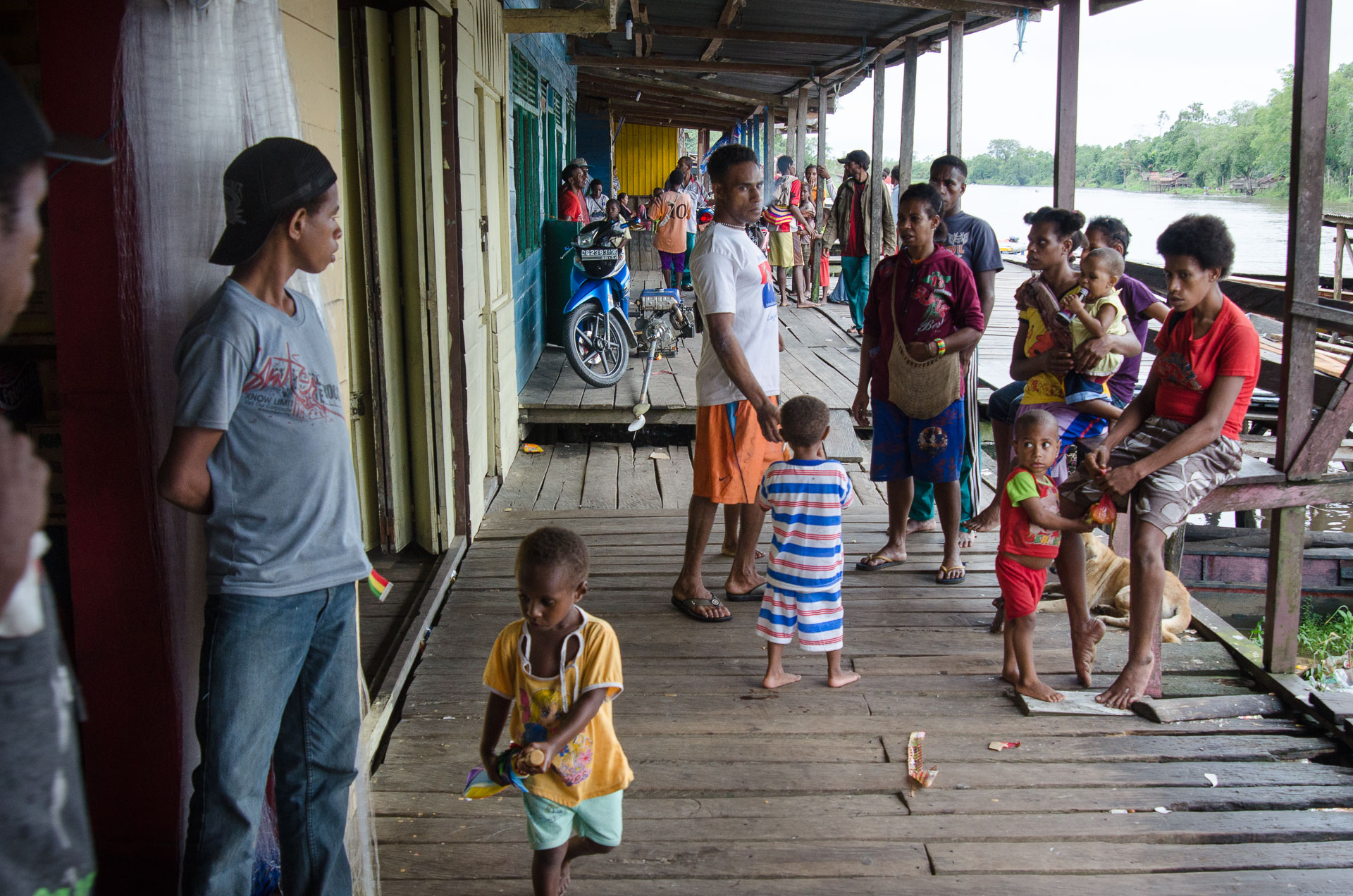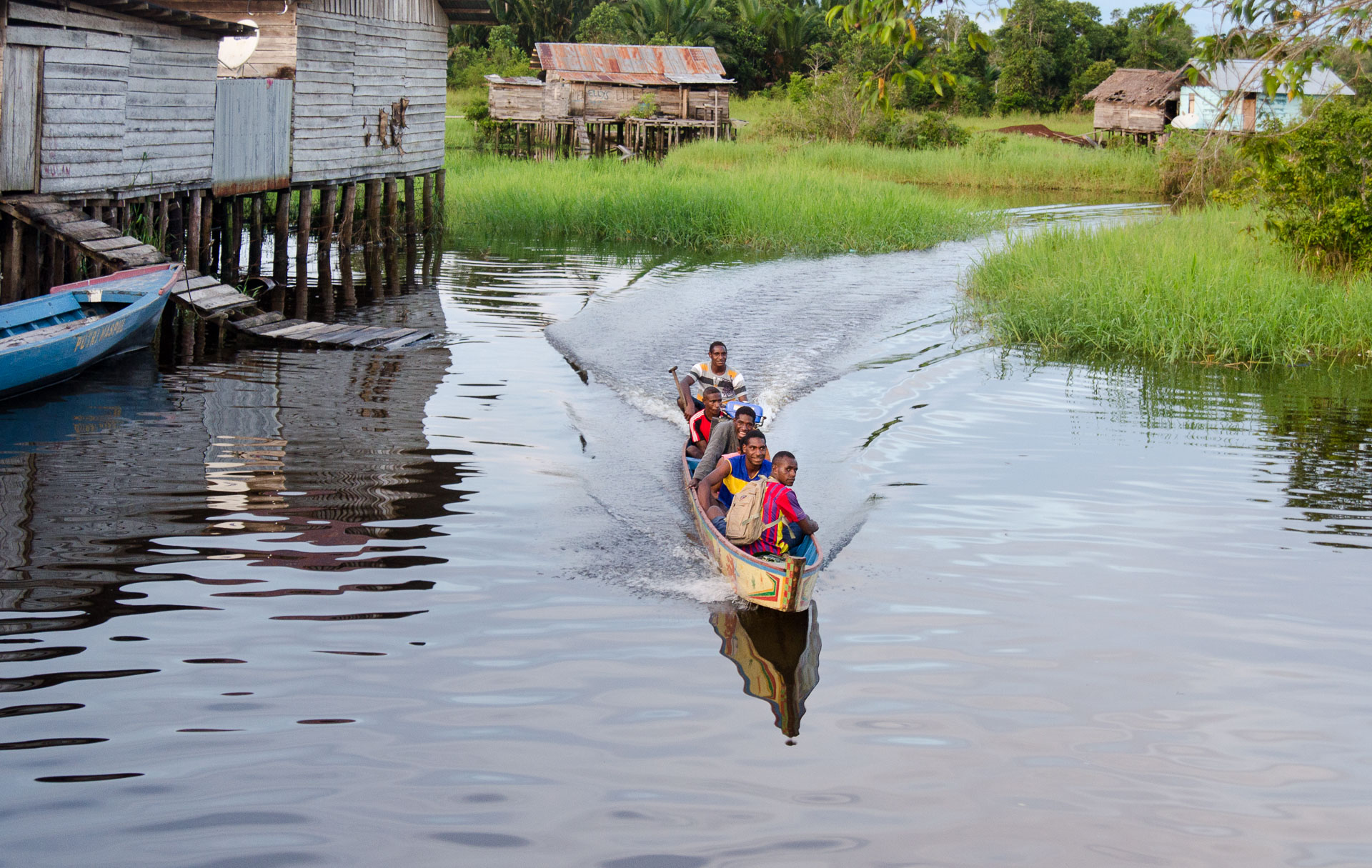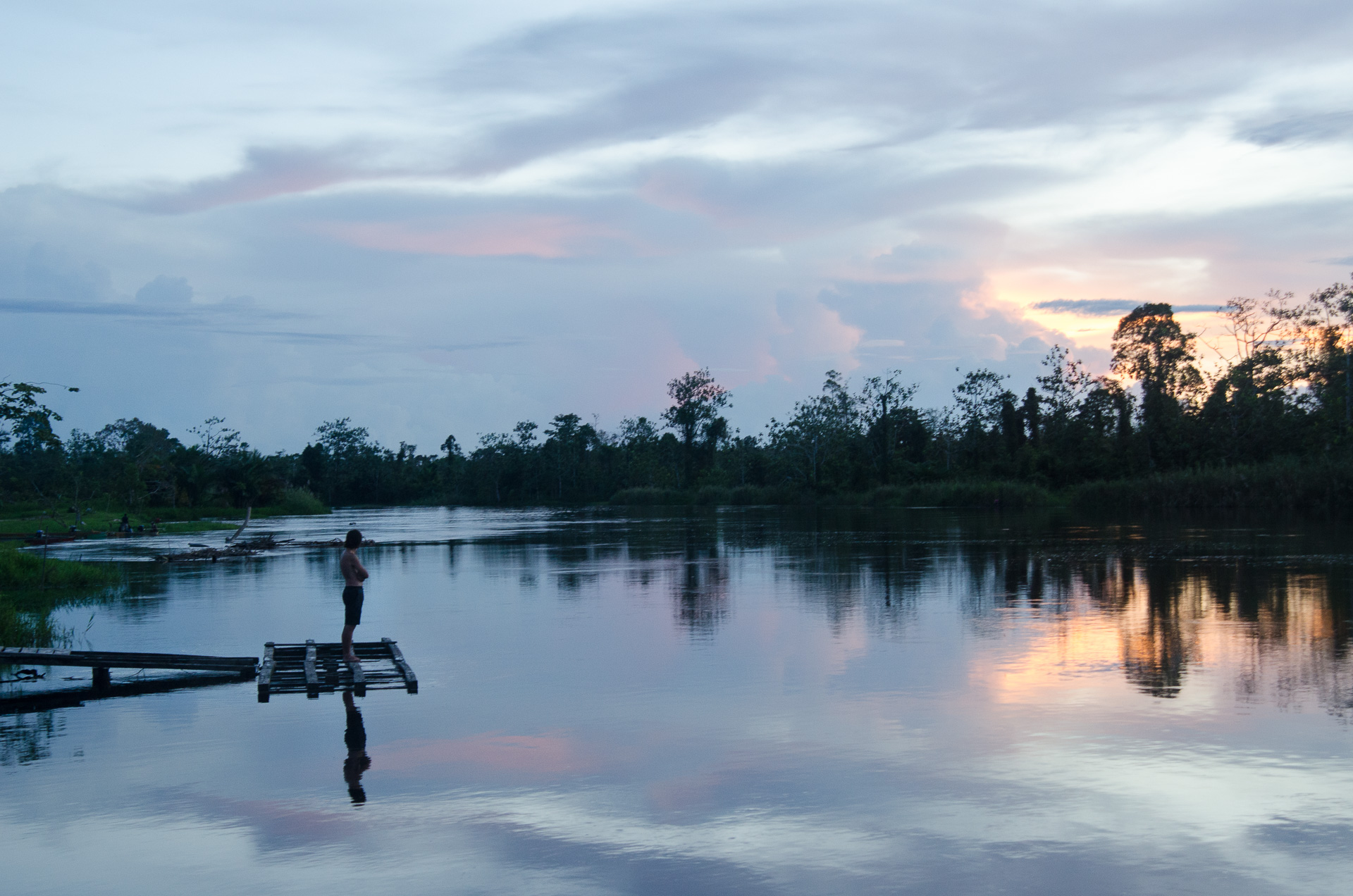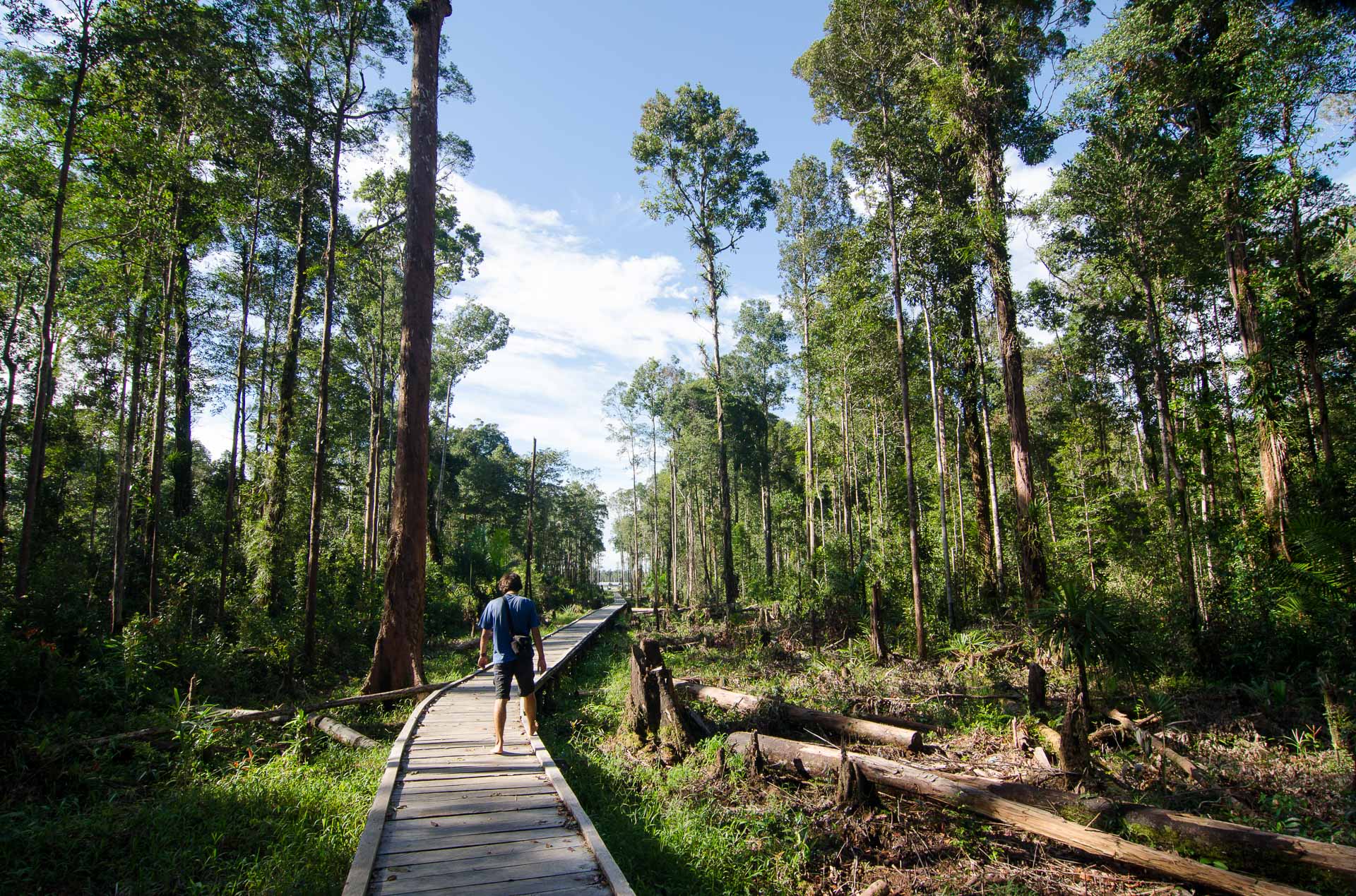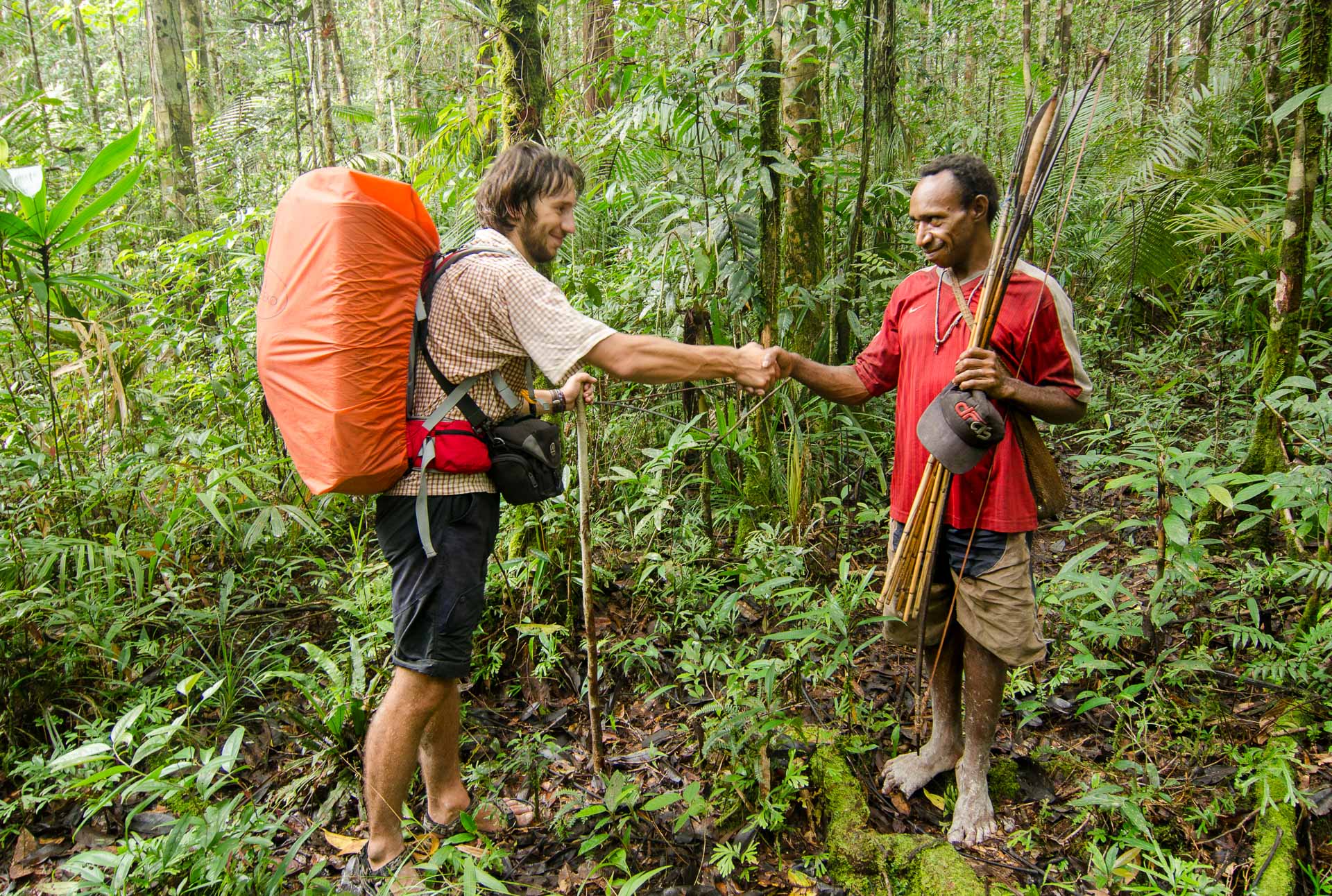
In June 2012, together with Iulius Carebia, I embarked on a ship to Papua. We were going to find the Korowai, a tribe living between the rivers flowing south of the Maoke Mountains, known for building their houses on treetops. We didn’t find much information about them, except for a few documentaries and advertisements for all-inclusive “tribal adventure”, all looking too exotic and suspicious. We were interested in reality.
As always, we were on a tight budget, and anyway, we travelled like locals people doo. And the cheapest way to go from Java to the south of Papua was by PELNI, at Kelas Ekonomi.
PELNI is the maritime transportation company that links the Indonesian Archipelago. Onboard you can have a glimpse of Indonesia packed on five decks. Thousands of people working in different provinces, families, students, militaries, traders of home-brewed alcohol, betel-nut sellers, gamblers, prostitutes, businessmen, radical Islamists and groups of Christian youth singing with enthusiasm, use to group according to ethnicity, religion, social class, or destination. There are loud karaoke bars on top of Muslim praying rooms, street food stallers, piles of mattresses, rescue boats hiding travellers without tickets or used as toilets (guess how I found it out), and improvised cinemas. At the ship speakers, we heard loudly the Azan, five times a day, the announcement of food serving times and the advertising of the next movie, always alternating a combat one with a porno one – presented as “very romantic”. 10k IDR (0.8$) for a ticket, combat/porn movie, sold at a small desk, along with boiled eggs, imported apples and homemade banana chips. The food on PELNI is shit, and there’s not such thing as comfort, but the whole experience worth it.
After seven days, we debarked in Agats, in the south of Papua. It’s a small, picturesque town entirely built on stilts, with suspended, wooden streets. Even the soccer field is on a wooden deck. Agats is a lazy administrative centre in the middle of the Asmat territory. There are way too many administrative offices packed with dormant civil servants in khaki uniforms, waiting for the next payday. Besides them, there are a few local fast-food outlets and shops, all run by Indonesians. The rest is a village, where the Asmat people live. Most of them didn’t seem to have any occupation, looking rather like homeless living from hand to mouth.
The Asmats are famous for their ritual artwork, particularly their carvings, through which they communicate with the ancestors. After their arrival, in 1953, the missionaries condemned them as satanic, and slowly the Asmat culture faded out. Then, the brutal Indonesian occupation put a lid on them, taking their lands and forcing the indigenous out of the forest to become third-world citizens.
We saw some traces of the Asmat colourful culture at the “Museum of Asmat Culture and Progress”, ironically built by the Catholics. The curator, Erik, a patriotic and educated Asmat took us for a tour.
After Agats, followed four days of hitch-hiking on boats of fish traders and agarwood collectors, upstream to Tiau, a village of Citak tribes. In Tiau we felt, for the first time, as being somewhere else than in Indonesia: different people, a different way of relating to us and different stories. It was the first Melanesian community we stayed with, in the Indonesian occupied Papua. The Citaks are the downstream neighbours of the Korowai. There, we managed to get a decent description of the access to the Korowai area, and bargained a canoe to take us upstream.
From Tiau, a dugout cone brought us to Basman, a village on the southern border of Korowai territory. It took us eleven days to get there from Surabaya, the harbour city in Java.
We stopped on an empty bank, from where a wooden bridge was leading inland. The recently built bridge, stretching a few hundreds of meters to the village, was not what we expected to find there. It had been built to serve transport construction materials. The Indonesian Government was building two villages there, to move and re-settle the Korowai out from the forest. One village – Mu 1– had been finished a few years before. Around 50 houses, looking like a labour camp without inhabitants and an empty school building.
The Korowai are semi-nomads, living in and from the forest. Each family lives on its own territory. A few attempts have been made to re-settle them in villages. After a couple of days, they used to return to the forest to hunt and gather food, when their supplies were finished.
In Basman, we were hosted by Daut, one of the clans’ chiefs, and his two wives. The heads of other families gathered at Daut to check what we brought with us, and why were we there.
We found it difficult to agree with them over an itinerary. We thought they were suspicious regarding us. But there was something else. The Korowai are organized into clans, each one with its ancestors and territory. And not all clans have a good relationship, which can easily spark a fight. In the forest, they are always winding between territories, to avoid the enemies. Our plan to cross all Korowai lands on an “efficient” route proofed to be mission impossible. We gave up and accepted to simply follow the people who they appointed to guide us.










